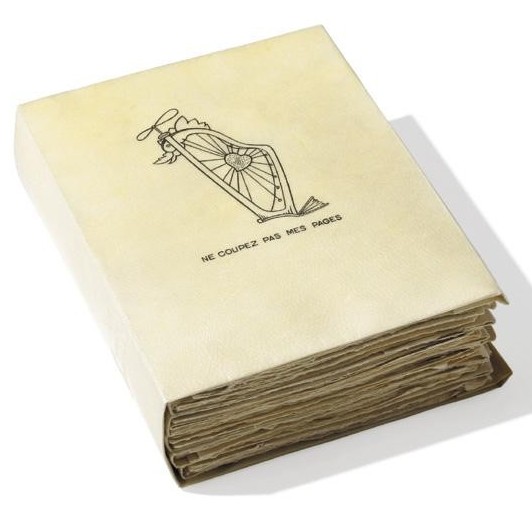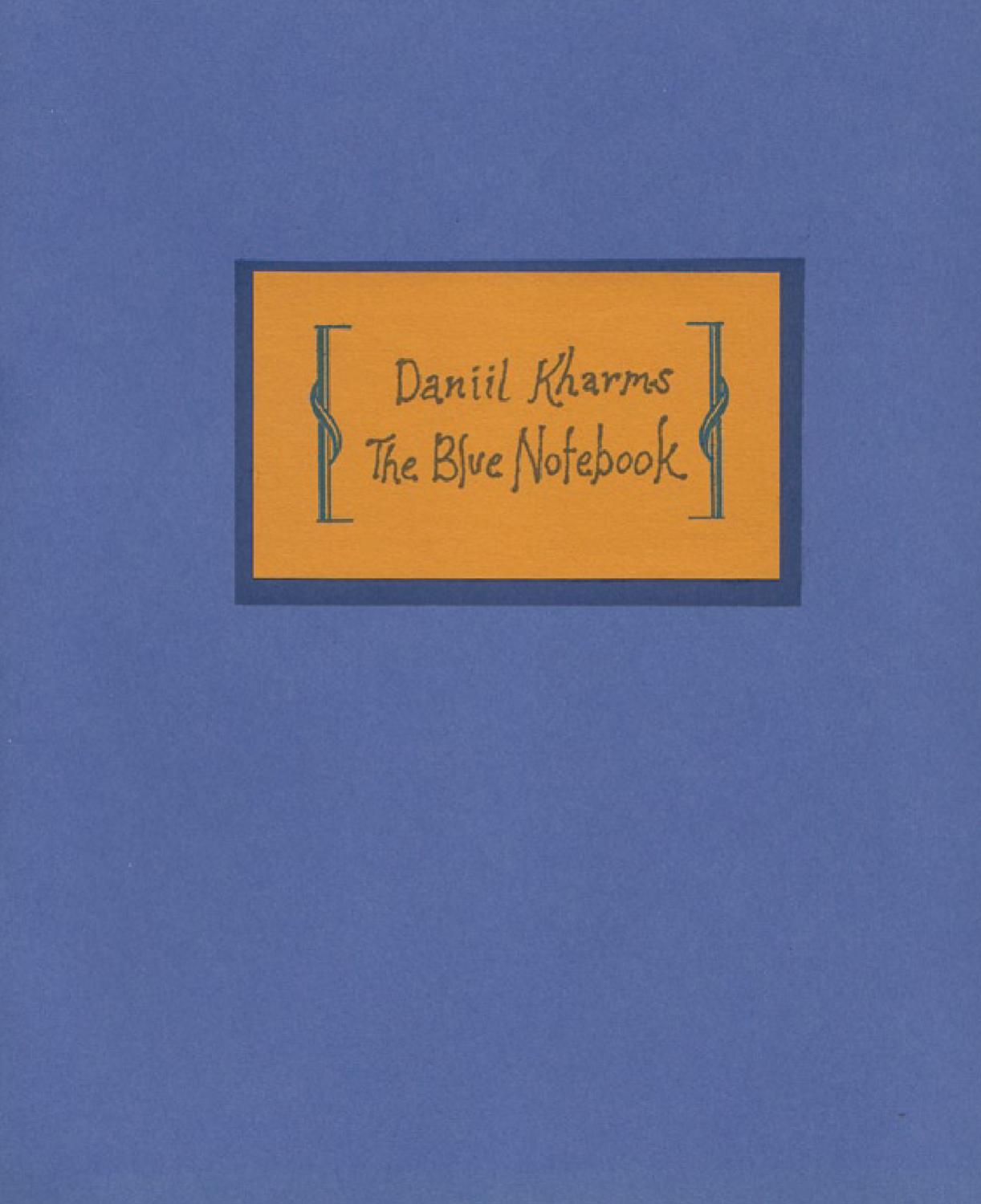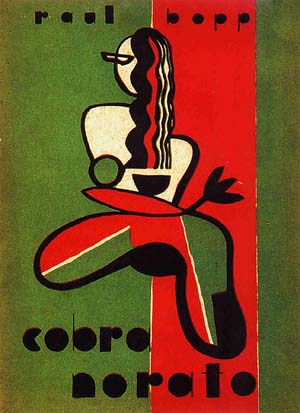Iliazd (ed.): Poésie de mots inconnus (1949)
Filed under artist publishing, poetry | Tags: · avant-garde, dada, poetry, sound poetry, visual poetry

An early anthology of experimental visual and sound poetry featuring poems by 21 avant-garde authors and illustrated with seven woodcuts, six etchings, two engravings, three drypoints, two aquatints, and six lithographs.
“Iliazd was well acquainted with the work of James Joyce, of Christian Morgenstern, and other writers who had played with the phonetic and graphical potential of language in the 19th and 20th century. But he chose to focus on the work of his peers, those figures within the modern movement of the first decades of the 20th century with whom he had been acquainted, and whose experiments he wished to bring to light and into a formal platform for recognition. He had good reason, in the late 1940s in Paris, to want to do this, as a gauntlet thrown down by the newly arrived upstart poet-theorist of Lettrism, Isidore Isou, challenged the emerging history of avant-garde literature with claims about the originality of his inventions.” (Source)
Poems by Ibronke Akinsemoyin, Pierre Albert-Birot, Hans Arp, Artaud, Jacques Audiberti, Hugo Ball, Nicolas Beaudin, Camille Bryen, Paul Dermée, Raoul Hausmann, Vincente Huidobro, Iliazd, Eugène Jolas, Velimir Khlebnikov, Alexei Krutchonykh, Pablo Picasso, Boris Poplavsky, Kurt Schwitters, Michel Seuphor, Igor Terentiev, Tristan Tzara.
Images by Arp, Georges Braque, Bryen, Marc Chagall, Oscar Dominguez, Serge Férat, Alberto Giacometti, Albert Gleizes, Hausmann, Henri Laurens, Alberto Magnelli, André Masson, Henri Matisse, Jean Metzinger, Joan Miró, Picasso, Léopold Survage, Sophie Taueber-Arp, Edgard Tytgatt, Wols, Ribemont-Dessaignes.
Publisher Le Degré Quarante et Un (Iliazd), Paris, 1949
26 folded sheets, 32 x 25 cm
Edition of 157
via MoMA
Commentary: Johanna Drucker (Amodern, 2016).
Comment (0)Daniil Kharms: The Blue Notebook (2004)
Filed under poetry | Tags: · avant-garde, poetry

A book of short poetic fragments by the Russian poet and dramatist Daniil Kharms.
Translated by Matvei Yankelevich
Afterword by Branislav Jakovljevic
Publisher Ugly Duckling Presse, Brooklyn, NY, 2004
Fourth edition, Dec 2005
Eastern European Poets series, 6
pages
via publisher
Raul Bopp: Cobra Norato (1931–) [BR-PT, EN]
Filed under poetry | Tags: · anthropophagy, avant-garde, brazil, modernism, poetry

“Raised in the south of Brazil, trained as a lawyer in Recife and Rio, and seasoned as a diplomat in Japan and the United States, Raul Bopp found his true subject in Manaus, where he discovered what he insisted was the authentic Brazil. Bopp brought to the early Modernist movement in Brazil a fascination with the folklore, Indian languages, and culture of the vast hinterland of the Amazon basin. As a contributor to the magazine Revista de Antropofagia (Anthropophagical Review) in the 1920s and 1930s, Bopp defined the concerns of what he called the “Cannibalist school” of poetry. ‘Anthropophagical’ in their appropriative and assimilative relation to European experimental writing, the theories of Bopp and Oswald de Andrade further associated them with the tenets of the cosmopolitan/indigenist “Verde e Amarelo” writers, who took their name (“The Green and Yellow”) from the colors of the Brazilian flag.
His long poem Cobra Norato (The Snake Norato or, as translated by Renato Rezende, Black Snake) was written in 1928 and published in its first version in 1931. In it Bopp embodies his primitivist, mystical sense of the life of Brazil’s interior, whose energy he and the other “Cannibalists” proposed as an alternative to the compromising forces of modern urban life. Skeptical, impressionistic, rhythmically complex, and erotically playful, the poem moves at times like a dream or a fairy tale. Its politics, however, are humanitarian and ecologically alert to the dangers o fexploiting the rain forest and its indigenous cultures. In later editions, Bopp softened the bluntness and difficulty of the poem’s diction, making the tone less austerely visionary and more tender. In his later poems, in his criticism, and in his several volumes of memoirs, Bopp continued his Modernist advocacy of Amazonian and Afro-Brazilian folklore as sources of energy and psychic survival.” (Source)
First published in Rio de Janeiro, 1937.
Cobra Norato / Black Snake (BR-Portuguese/English, trans. Renato Rezende, 1996, excerpts, HTML)
Cobra Norato (English, trans. Chris Daniels, 2008)

